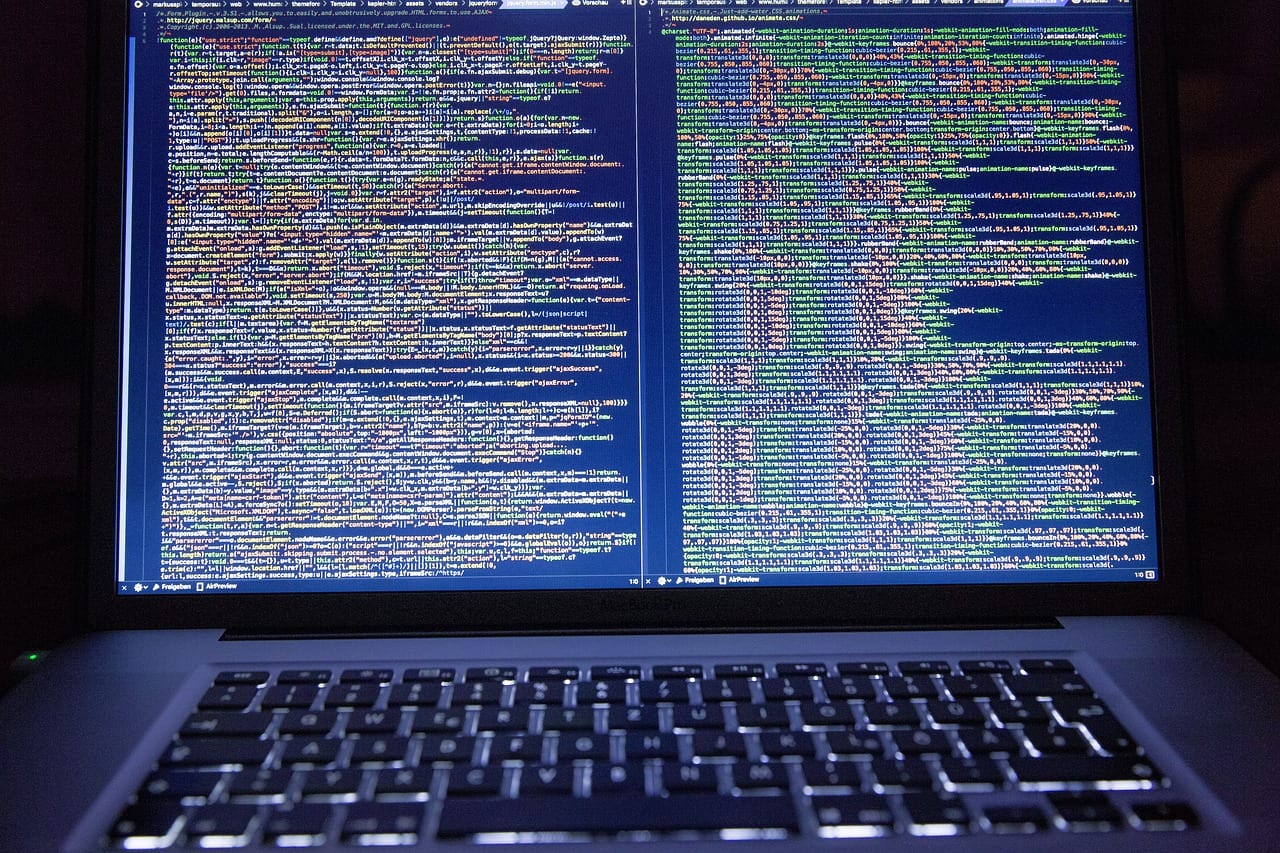A monitor is one of the most important components of your PC setup and a crowning jewel of your entire rig. Even though it may sound easy, buying a monitor is not an easy task. Namely, in today’s time, there are dozens of brands to choose from. Not only that, but there are a ton of different specifications to consider, which may seem extremely confusing to someone who’s not that tech-savvy, making the process even longer and more complex.
For that reason, we will briefly explain the different features and specifications you should consider before purchasing a monitor to get the best value for your money. At the same time, we’ll do our best to avoid all the unnecessary techy details, so you don’t have to waste hours trying to wrap your head around it.
What Do You Need a Monitor For?
Before you begin searching for a monitor, the first thing you should do is ask yourself why you’re buying a monitor in the first place and what you’ll be using it for. In most cases, the two main reasons for getting a monitor are work and gaming.
This is important because you’ll prioritize different monitor specifications based on your needs. For example, if you need a gaming monitor, you should focus on the resolution, refresh rates, and input lag. On the other hand, if you need a monitor for work, the specs you should focus on mainly depend on the job type.
If you’re working as an image or video editor, you’ll focus on a monitor’s contrast ratio, color gamut, resolution, and color depth. However, if you’re merely working from home because of COVID-19 and your job doesn’t require professional video and image editing, you can buy virtually any monitor that fits your budget.
To get you started, we’ll tell you more about different monitor specifications and why they matter to help you make an informed decision.
Screen Size and Resolution
Believe it or not, bigger is not always better in terms of monitor sizes, especially if you lack desk space to place a gigantic monitor. Another con of a big monitor is that you’ll have difficulty placing two monitors side by side.
On the other hand, having a large monitor can be beneficial. For example, ultrawide monitors are excellent for work as they offer much bigger screen real estate allowing you to open multiple windows and improve your workflow. Furthermore, an ultrawide monitor provides a bigger field of view in video games, giving you a slight advantage over other players.
Generally speaking, a monitor size is just a matter of personal preference. In today’s time, the most common monitor sizes are 24” and 27”, which is the sweet spot for both gaming and work. But, of course, if you wish for a bigger monitor, you can always opt for a 34” ultrawide.
However, before you decide, it’s important to know that there’s a direct correlation between the monitor’s resolution and the screen size. Namely, the bigger the monitor, the higher the resolution you should go for to ensure a crisp image.
Monitor resolution represents the number of pixels a monitor has. When it comes to pixels, think of them as tiny dots. Each of these dots is a different color, and the more pixels a monitor has, the more accurate and realistic an image is. In other words, the resolution is one of the key features that will determine image quality.
To go into more detail, let’s take a 1920 x 1080 resolution as an example. The 1080p resolution will look gorgeous on a high-quality 24” monitor. However, take the same resolution and put it on a 50” monitor, and the image will be dreadful and boxy. In other words, make sure to go for a monitor with a fine balance between the screen size and monitor resolution.
Some of the most popular monitor resolutions are:
- 1280 x 1024
- 1600 x 900
- 1920 x 1080
- 1920 x 1200
- 2560 x 1440
- 3440 x 1440
- 3840 x 2160
- 4096 x 2160
- 5120 x 2880
So, what monitor resolution should you get?
If you’re a gamer, we recommend getting a 1080p or a 1440p monitor. Of course, if you have a high-end PC, you can even get a 4K monitor (2160p), considering its other specs are good as well. While virtually any monitor is suitable for work, image and video editors should always go for 4K, 5K, or even 8K monitors.
As we just mentioned, an important thing to know is that you’ll need a good graphics card to make the most of the monitor’s resolution. If you have a low-budget PC and an outdated GPU, buying a 4K monitor won’t do much good since you’ll have to play on lower resolutions and deal with FPS drops since your GPU won’t be able to support a high resolution.
Panel Type
Panel type refers to the technology the monitor uses to display pictures. Without going into too much detail, the three most common panel types are TN, IPS, and VA.
TN monitors generally offer the worst viewing angles, displays, and colors. On the other hand, they are cheap and often have high refresh rates and low input lag, making them ideal for gaming.
IPS monitors offer much better color accuracy than TN monitors. At the same time, you can also get an IPS monitor with a high refresh rate and low input lag, but at a much higher price when compared to a TN monitor.
When it comes to VA monitors, they are generally considered the worst for gaming. However, they are known for excellent color contrast and color gamut, making them ideal for video and image editing professionals.
When choosing a panel type, keep in mind that even though some panels generally perform better in certain areas, you can stumble upon, let’s say, IPS monitors with better refresh rates than a TN monitor. Therefore, you have to check the monitor’s specifications first and then decide on the panel type.
Refresh Rates
We briefly mentioned refresh rates when talking about different panel types. Simply put, the higher the refresh rate, the better. Namely, a refresh rate represents the number of times your monitor “refreshes” or updates the information sent from the GPU to the screen. It’s displayed in hertz (Hz), and the most used monitors have a 60 Hz refresh rate.
If you’re not a gamer, you won’t really need anything above 60 Hz. However, if you enjoy video games, a high refresh rate is something we wholeheartedly recommend. As to what refresh rates you should go for, 144 Hz and 240 Hz are both fantastic options.
So, why are high refresh rates better? Well, higher refresh rates ensure a much smoother experience, and many professional players say it makes for a better aiming experience. Nowadays, there are millions of Apex Legends players, and games like CS:GO have hundreds of thousands of concurrent players on the regular. Therefore, a lot of players buy better gear to be ahead of the curve.
Once again, you should make sure to have a graphics card powerful enough to support high refresh rates. If your PC can’t run a stable 60 FPS or more in the game you’re playing, you won’t notice the silky-smooth experience a high refresh rate monitor can provide. Another thing you should know is that you can always lower the resolution or in-game details to get more FPS, which should make the high refresh rate more effective.
Nowadays, you can even find monitors that have a refresh rate of 360 Hz. However, we think they are a tad overkill and that you won’t see significant improvements over 240 Hz monitors, which is why we recommend getting either a 144 Hz or a 240 Hz.
Input Lag
Input lag represents the time needed for your monitor to display a frame sent from a graphics card. Whenever you press a key, the information is sent to your PC, processed by your GPU, and displayed on your monitor. Naturally, the lower the response time, the better. However, this factor is only relevant for gamers. If you’re buying a monitor for work, you don’t have to pay attention to input lag.
Most modern-day monitors have an input lag of around 8ms to 20ms. However, when it comes to gaming monitors, most of them have an input lag of 5ms and 1ms, which is what you should be aiming for as a gamer.
Should I Get a Curved Monitor?
Last but not least, you should decide whether you want a curved monitor. Curved monitors offer better immersion and are absolutely gorgeous. In most cases, a curved monitor will be 30” or more. However, while you can find smaller curved monitors, the experience is not the same, and the curvature loses its effectiveness.
Not only that, but curved monitors are a lot more expensive. Therefore, unless you plan to splurge, you should save a few bucks when buying a monitor that’s less than 30”.
However, if you can afford it and plan on getting an ultrawide monitor, a curved one will improve your entire experience, so we most definitely recommend getting one.
The Takeaway
Buying a monitor is about the fine balance between the panel type, refresh rates, response time, screen size, and resolution. Of course, while you can always opt for the “best of everything,” a premium monitor isn’t cheap, and it may set you back thousands of dollars.
Instead of spending money on features you won’t use or need, it’s important to set your priorities straight.
For gamers, we recommend IPS monitors with a resolution of 1920 x 1080, 1ms input lag, and a 240 Hz refresh rate. Of course, you can always go for a different resolution or a panel type so that the purchase fits your budget.
As far as image and video editors go, an excellent monitor should have a color contrast of 1000:1 or 1400:1 and a color gamut of 99% or 100% Adobe RGB or a high percentage DCI-P3. Of course, you should also make sure it has enough ports so that you can plug multiple devices and make your work experience just a tad better.
Additionally, make sure to opt for a monitor with Delta E ≦2 color accuracy, meaning it’s ready for professional use from the get-go.
Now that you have a general idea of what to look for, you can find the brand you like and decide how much you’re willing to spend on a monitor.






